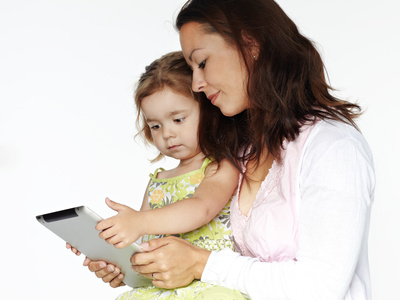Which Toys Work Best for Supporting Interactions with Your Child

At The Hanen Centre, we encourage parents to involve their children in meaningful, positive interactions throughout their day. Have you ever noticed, though, that some toys make it harder to get an interaction going with your child than others? If so, you are not alone.
Research shows that the type of toy you and your child are playing with can have a significant impact on the type of interaction that occurs.
Research published in the Journal of the American Medical Association, Pediatrics, shows that the type of toy you and your child are playing with can have a significant impact on the type of interaction that occurs.
Anna V. Sosa, a professor at Northern Arizona University, compared the amount and type of interaction that occurred in three different situations: during traditional toy play (playing with puzzles, shape sorters, etc.), during book reading, and during play with electronic toys.
The Study
- Researchers observed 26 parent-infant pairs, with infants between 10-16 months of age.
- Each pair was given three sets of toys that were chosen based on their ability to produce conversation about specific topics: animals, shapes and colours.
- Traditional toys: a farm animal puzzle, a shape-sorter, and rubber blocks
- Electronic toys that were marketed as being “educational”: a baby laptop, a talking farm, and a baby cell phone
- Board books: two about animals, two about shapes, and one with a colour theme
- The parents played with their children twice a day for 15 minutes, for three consecutive days, giving the pairs an opportunity to play with each toy set twice. The order of which sets of toys they played with was randomized.
- The play sessions were recorded using LENA (Language Environment Analysis) software, which analyzes how much adults speak to their child and back and forth exchanges between parents and child.
- Researchers reviewed each play session and looked at the following five outcomes:
- The number of words the adults said during the play session.
- The number of content-specific words parents used (that is, the number of words that were either about animals, shapes, or colours).
- The number of speech-like sounds the infants made.
- The number of conversational turns. This was measured as a word or sound the parent or infant said that occurred within five seconds of what their conversational partner had just said.
- The number of parent responses per minute. These were words or sounds made by the adults that were direct responses to what the child had just said.
Results
The researchers compared the five outcomes in the three types of toy play.
They found that parents were most responsive to their children during traditional toy play and book reading, and that during play with electronic toys, parents:
- used less words
- used less content-specific vocabulary
- took less conversational turns
- were less responsive to their children
There were some additional benefits to book reading. When sharing books, infants used the most word-like sounds and parents used:
- the most words
- the most content-specific vocabulary
What this means
The results of this study give us lots to think about.
1. Interaction is harder to achieve with electronic toys
Most children enjoy engaging with electronic toys. However, these toys may make it harder for you to interact with your child. This may be because electronic toys tend to be all-consuming, and particularly if the toy also “speaks” it might be hard to get a word in edge-wise! (Sosa, 2015)
There is a lot of hype surrounding electronic toys geared at very young children that are marketed as learning tools. However, children’s learning occurs through positive social interactions.
There is a lot of hype surrounding electronic toys geared at very young children that are marketed as learning tools. However, children’s learning occurs through positive social interactions (e.g. Roseberry, Hirsh-Pasek, and Golinkoff, 2014).Youwill have far more impact on your children’s language and learning than any toy. A positive interaction matters more than the specific toy that you are playing with.
2. Book reading is beneficial, even for very young children
Out of the three test conditions in the study, it was when parents read with their infants that they talked the most, and where babies in the studies made the most word-like sounds. This means that book reading is an excellent time to take turns and have a conversation.
Also, when very young children are exposed to books, they pay attention to the rhythm of the written words. Book reading encourages language learning and it prepares children to read on their own when they get to school (Dickinson, Griffith, Michnick Golinkoff, Hirsh-Pasek, 2012).
The Bottom Line
When you’re interacting with your child, aim for him to pay more attention to you than to the toy. The more your child engages in back and forth interactions with you, the more language he’ll be learning, and the more valuable the experience will be.
Similar articles by tag:
